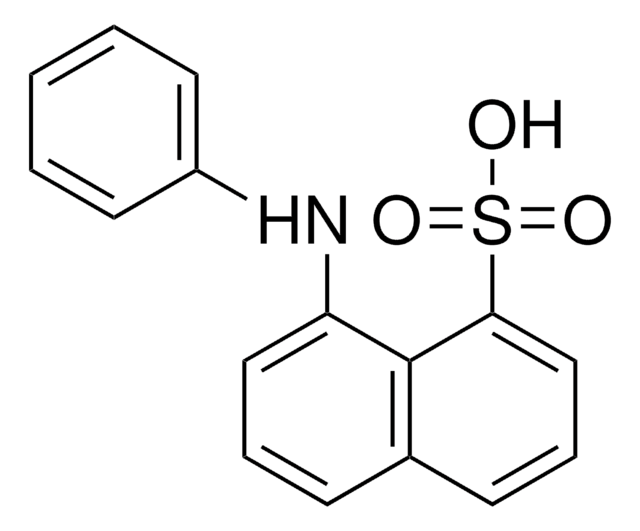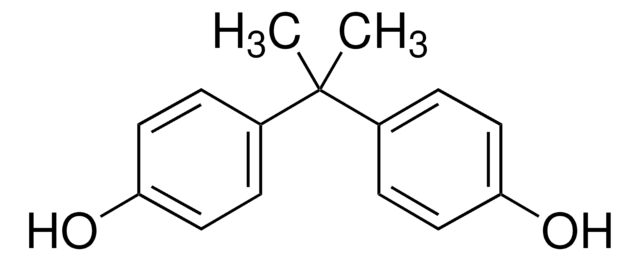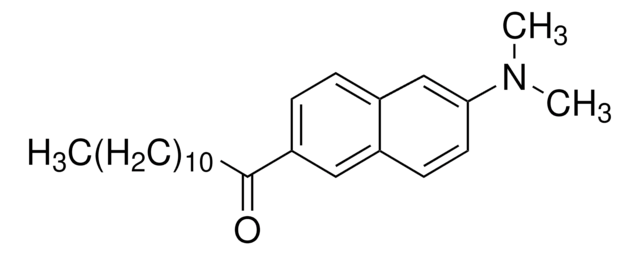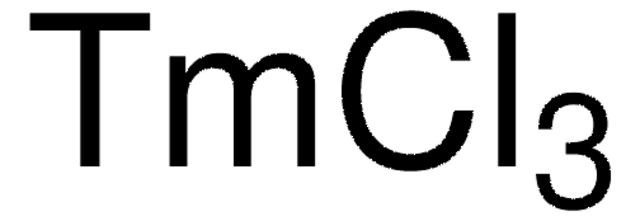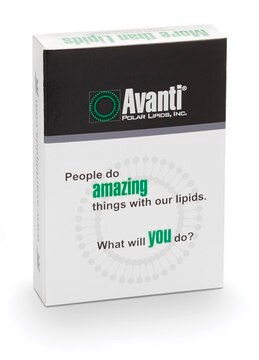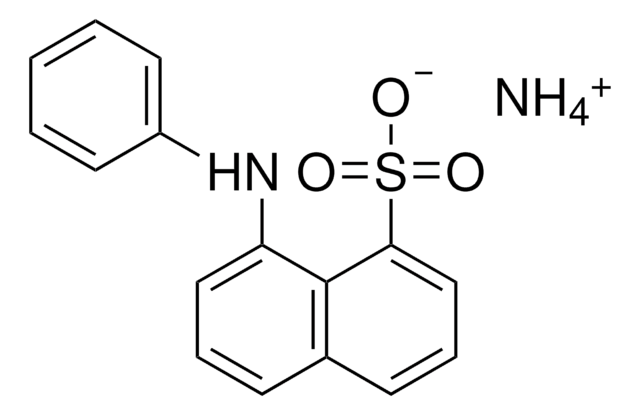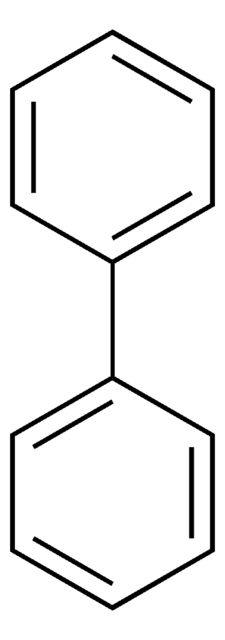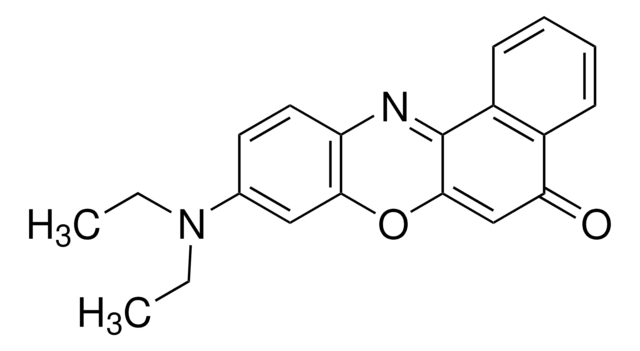41525
N,N-Dimethyl-6-propionyl-2-naphthylamine
BioReagent, suitable for fluorescence, ≥98.0% (HPLC)
Sinônimo(s):
2-(Dimethylamino)-6-propionylnaphthalene, 6-Propionyl-2-(dimethylamino)naphthalene, Prodan
About This Item
Produtos recomendados
linha de produto
BioReagent
Nível de qualidade
Ensaio
≥98.0% (HPLC)
Formulário
solid
pf
137 °C (lit.)
solubilidade
DMF: soluble
acetone: soluble
acetonitrile: soluble
methanol: soluble
fluorescência
λex 361 nm; λem 498 nm in methanol
adequação
suitable for fluorescence
cadeia de caracteres SMILES
CCC(=O)c1ccc2cc(ccc2c1)N(C)C
InChI
1S/C15H17NO/c1-4-15(17)13-6-5-12-10-14(16(2)3)8-7-11(12)9-13/h5-10H,4H2,1-3H3
chave InChI
MPPQGYCZBNURDG-UHFFFAOYSA-N
Categorias relacionadas
Aplicação
Embalagem
Outras notas
Não está encontrando o produto certo?
Experimente o nosso Ferramenta de seleção de produtos.
Código de classe de armazenamento
11 - Combustible Solids
Classe de risco de água (WGK)
WGK 3
Ponto de fulgor (°F)
Not applicable
Ponto de fulgor (°C)
Not applicable
Equipamento de proteção individual
Eyeshields, Gloves, type N95 (US)
Escolha uma das versões mais recentes:
Já possui este produto?
Encontre a documentação dos produtos que você adquiriu recentemente na biblioteca de documentos.
Os clientes também visualizaram
Nossa equipe de cientistas tem experiência em todas as áreas de pesquisa, incluindo Life Sciences, ciência de materiais, síntese química, cromatografia, química analítica e muitas outras.
Entre em contato com a assistência técnica